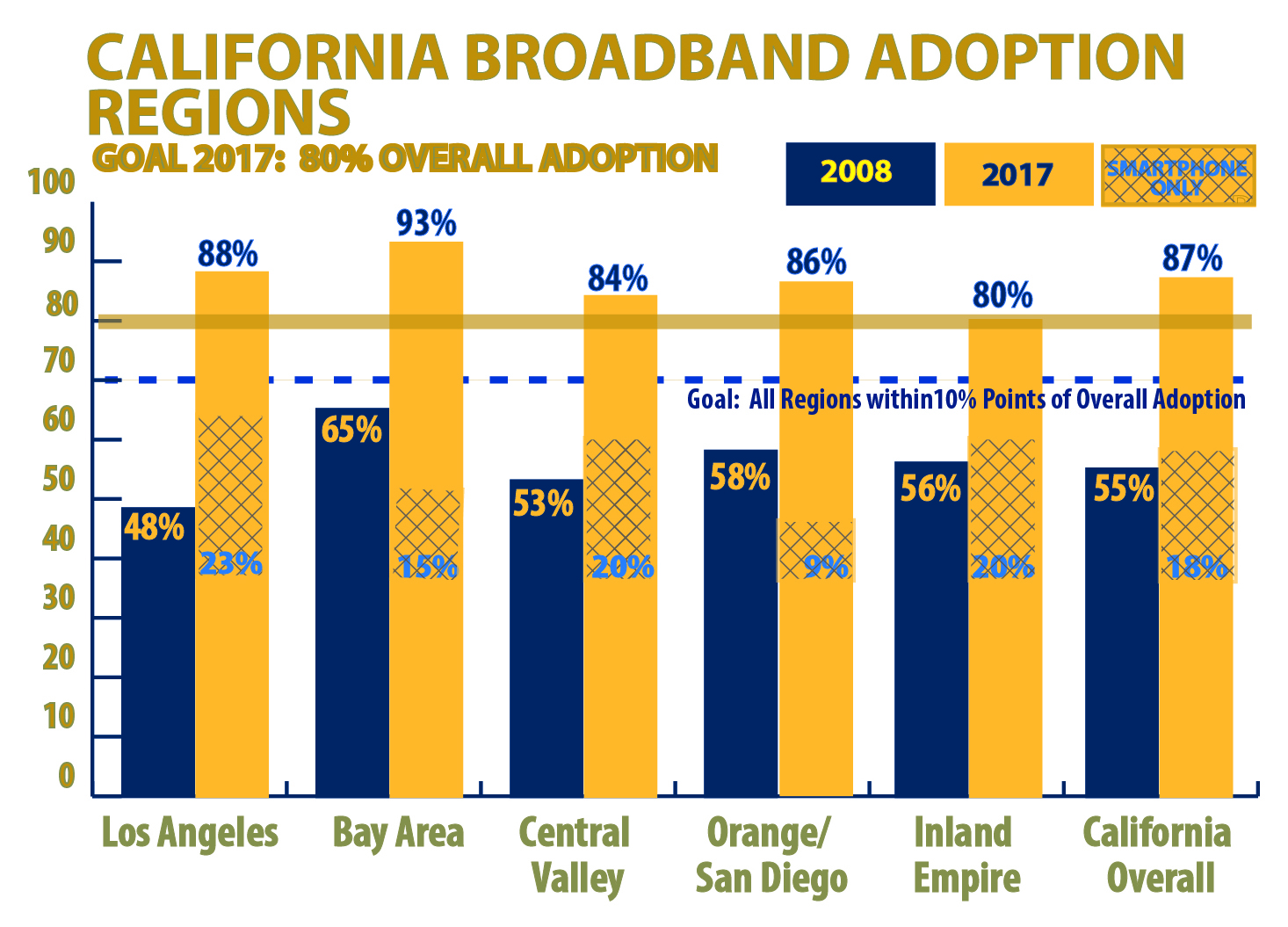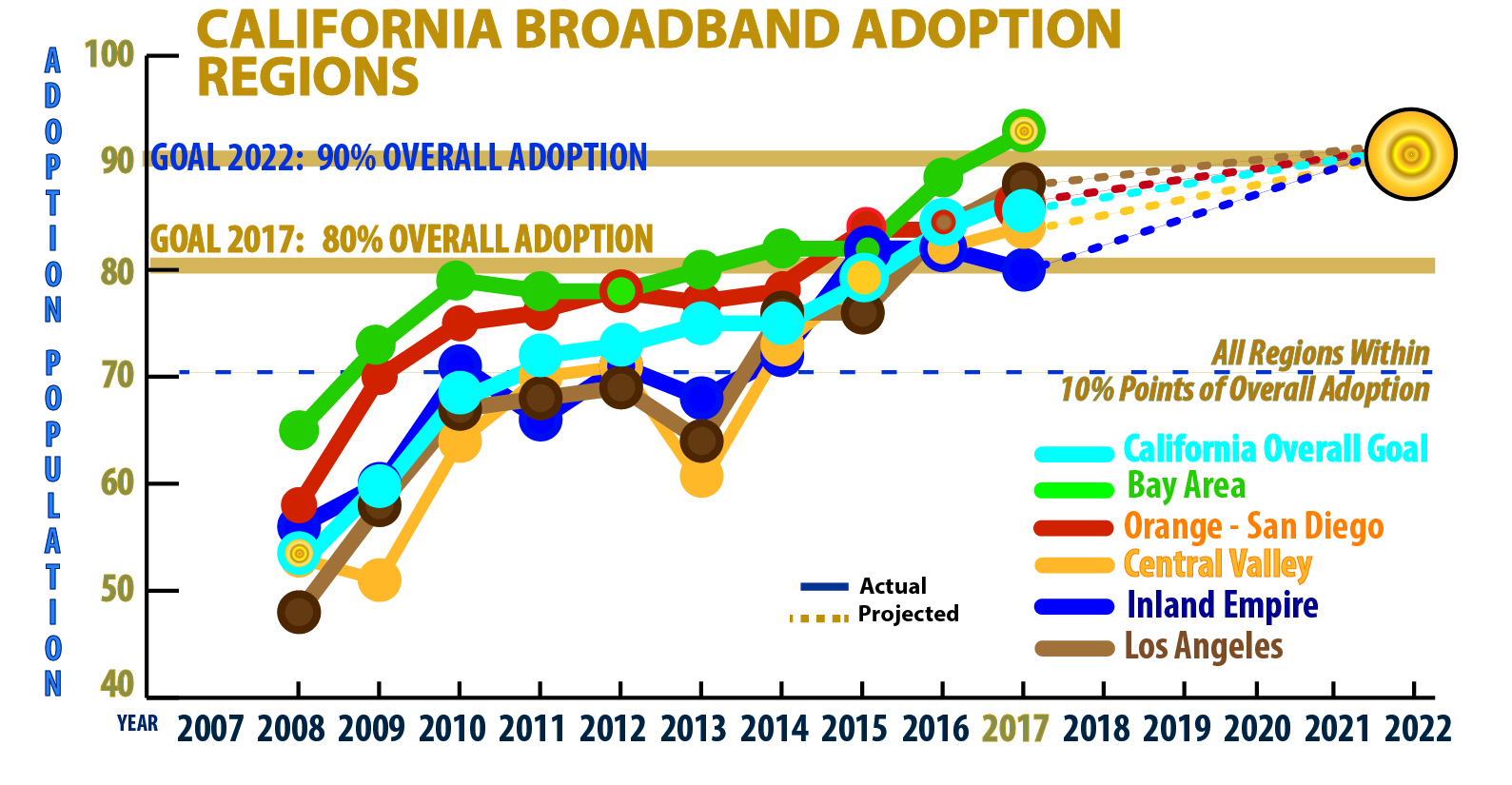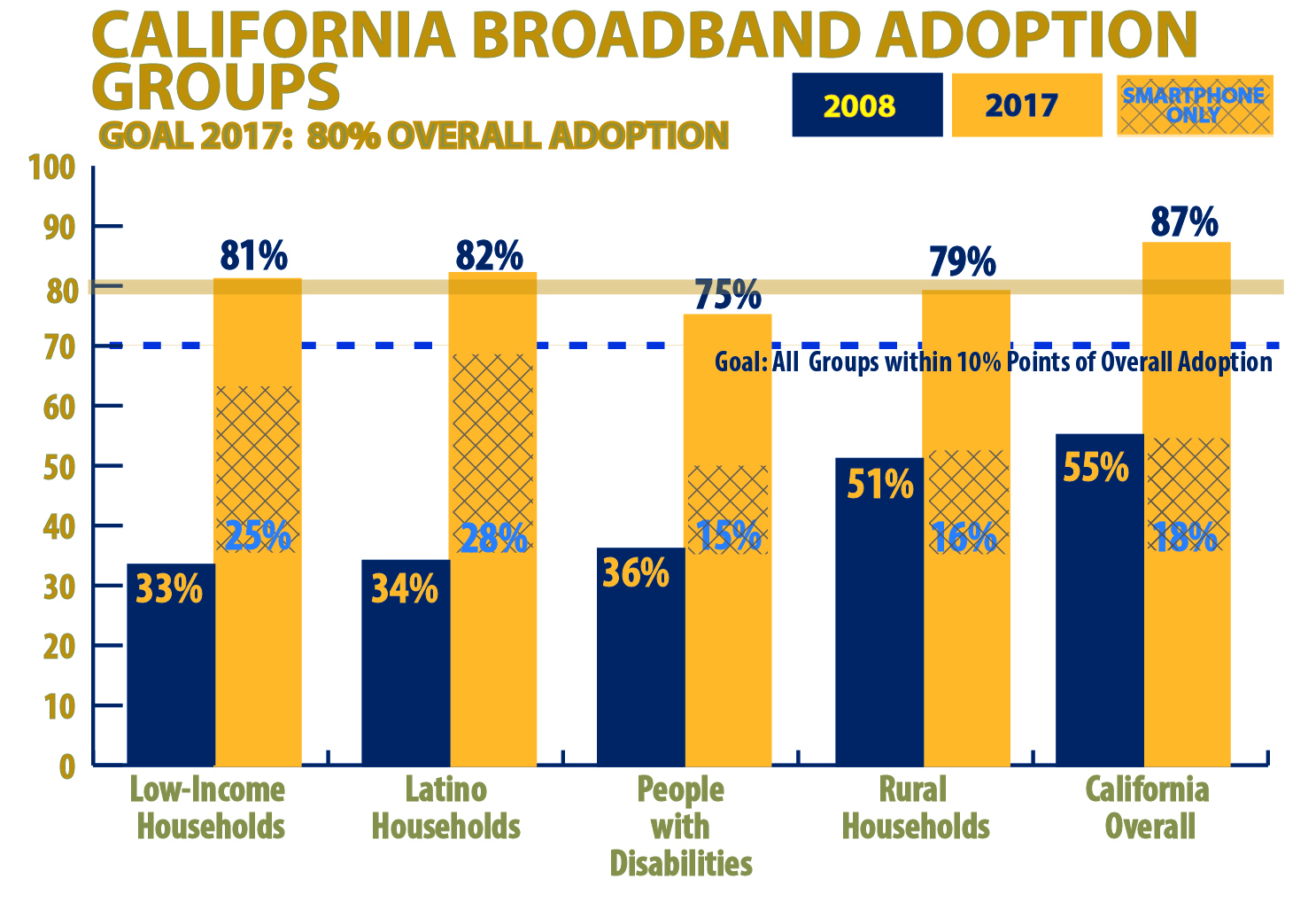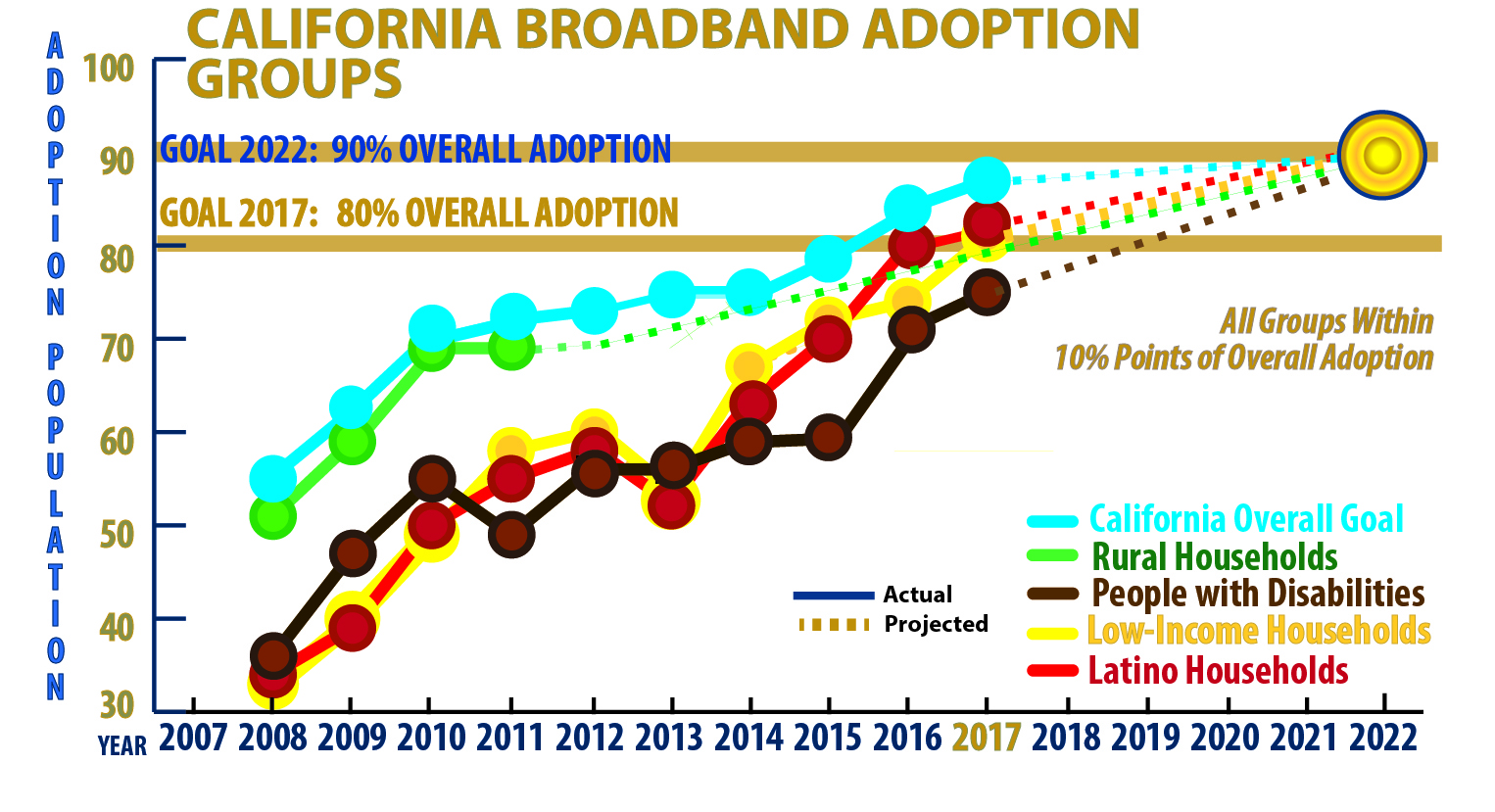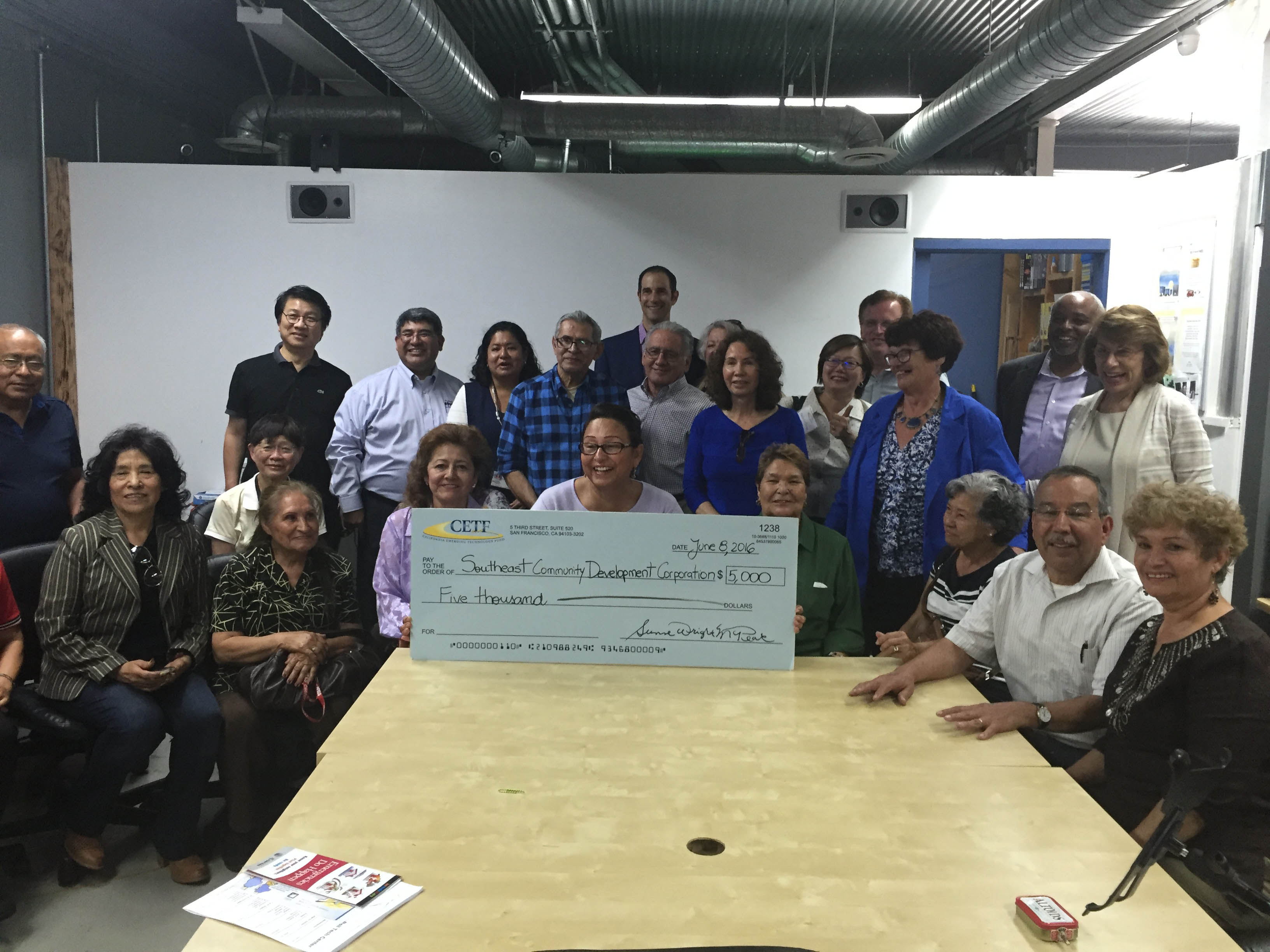Internet Connectivity and the “Digital Divide” in California Households is a summary report of the CETF 2017 Annual survey that tracks the progress of broadband deployment and adoption throughout California. The Annual Survey found 87% of California households have a broadband connection at home. Among the 87% with a home high-speed Internet connection (referred to generically as “broadband”), 18% have access through a smartphone only, while 69% report having broadband Internet access through a computing device. Between 2015 and 2017, the proportion of Californians connecting to the Internet only through a smartphone more than doubled from 8% to 18%. The Annual Survey confirms that the most disadvantaged residents remain offline or are “underconnected.”
Cost is by far the single biggest factor preventing those without Internet connectivity at home from going online. Of those without Internet access at home, 69% cite broadband service expense or not owning a computer or smartphone as a reason for not being connected, and 34% say this is their main reason. Another 44% of these respondents cite home Internet as too difficult to set up and learn, confirming the need for adoption assistance and digital literacy training in California. Indicating broadband infrastructure problems, another 19% report that Internet service is not available where they live.
According to the Annual Survey, several California demographic groups have home broadband adoption rates that fall more than 10 percentage points below the overall adoption rate of 87%. They include:
- Households earning less than $20,000 (75%)
- Adults 65 or older (69%)
- Spanish-speaking Latinos (69%)
- Not a high school graduate (67%)
- Adults who identify having a disability (75%)
“The Annual Survey details how the lowest-income, least-educated and most-rural Californians are living without an essential tool to access the educational, employment, healthcare and civic engagement opportunities that lead to greater economic opportunities and a better quality of life,” said Sunne Wright McPeak, President and CEO of the California Emerging Technology Fund. “We call on the California Legislature to extend the California Advanced Services Fund and to pass the Internet for All Now Act to ensure digital access and digital literacy for all. High-speed Internet access is a 21st Century Civil Right.”
The CETF Annual Survey, this year in collaboration with the 2017 UC Berkeley Institute of Governmental Studies (IGS) Poll, has been conducted since 2008. Pleaes also see: the CETF Press Release; the UC Berkeley Institute of Governmental Studies Poll Press Release issued on June 27, 2017; and the 2017 Annual Survey Tabulations.
About the California Emerging Technology Fund
The mission of CETF is to close the Digital Divide in California. The overall goal is to reach 98% of all California residences in every region with broadband infrastructure and to achieve 90% home broadband adoption by 2023. CETF is technology neutral: “broadband” is a generic term for high-speed Internet access—wireline and wireless Internet service is faster than a dial-up connection. CETF strives to achieve these goals through public awareness and education, grantmaking to community organizations, and advancing public policy. For more information, please visit www.cetfund.org.

